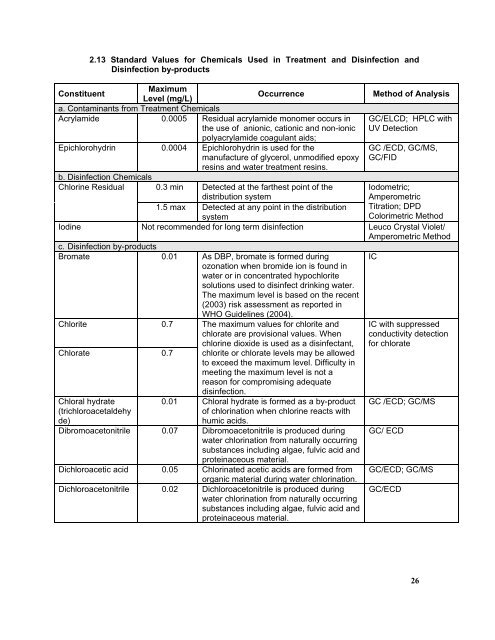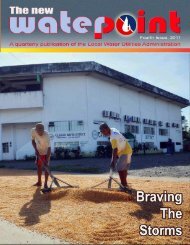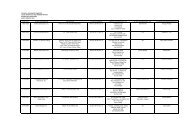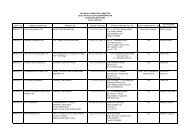Philippine National Standards for Drinking Water - LWUA
Philippine National Standards for Drinking Water - LWUA
Philippine National Standards for Drinking Water - LWUA
You also want an ePaper? Increase the reach of your titles
YUMPU automatically turns print PDFs into web optimized ePapers that Google loves.
2.13 Standard Values <strong>for</strong> Chemicals Used in Treatment and Disinfection and<br />
Disinfection by-products<br />
Constituent<br />
Maximum<br />
Level (mg/L)<br />
Occurrence<br />
Method of Analysis<br />
a. Contaminants from Treatment Chemicals<br />
Acrylamide 0.0005 Residual acrylamide monomer occurs in<br />
the use of anionic, cationic and non-ionic<br />
GC/ELCD; HPLC with<br />
UV Detection<br />
polyacrylamide coagulant aids;<br />
Epichlorohydrin 0.0004 Epichlorohydrin is used <strong>for</strong> the<br />
manufacture of glycerol, unmodified epoxy<br />
GC /ECD, GC/MS,<br />
GC/FID<br />
resins and water treatment resins.<br />
b. Disinfection Chemicals<br />
Chlorine Residual 0.3 min<br />
1.5 max<br />
Detected at the farthest point of the<br />
distribution system<br />
Detected at any point in the distribution<br />
system<br />
Iodometric;<br />
Amperometric<br />
Titration; DPD<br />
Colorimetric Method<br />
Iodine Not recommended <strong>for</strong> long term disinfection Leuco Crystal Violet/<br />
Amperometric Method<br />
c. Disinfection by-products<br />
Bromate 0.01 As DBP, bromate is <strong>for</strong>med during<br />
ozonation when bromide ion is found in<br />
water or in concentrated hypochlorite<br />
solutions used to disinfect drinking water.<br />
The maximum level is based on the recent<br />
(2003) risk assessment as reported in<br />
IC<br />
Chlorite 0.7<br />
Chlorate 0.7<br />
Chloral hydrate<br />
(trichloroacetaldehy<br />
de)<br />
WHO Guidelines (2004).<br />
The maximum values <strong>for</strong> chlorite and<br />
chlorate are provisional values. When<br />
chlorine dioxide is used as a disinfectant,<br />
chlorite or chlorate levels may be allowed<br />
to exceed the maximum level. Difficulty in<br />
meeting the maximum level is not a<br />
reason <strong>for</strong> compromising adequate<br />
disinfection.<br />
0.01 Chloral hydrate is <strong>for</strong>med as a by-product<br />
of chlorination when chlorine reacts with<br />
humic acids.<br />
Dibromoacetonitrile 0.07 Dibromoacetonitrile is produced during<br />
water chlorination from naturally occurring<br />
substances including algae, fulvic acid and<br />
proteinaceous material.<br />
Dichloroacetic acid 0.05 Chlorinated acetic acids are <strong>for</strong>med from<br />
organic material during water chlorination.<br />
Dichloroacetonitrile 0.02 Dichloroacetonitrile is produced during<br />
water chlorination from naturally occurring<br />
substances including algae, fulvic acid and<br />
proteinaceous material.<br />
IC with suppressed<br />
conductivity detection<br />
<strong>for</strong> chlorate<br />
GC /ECD; GC/MS<br />
GC/ ECD<br />
GC/ECD; GC/MS<br />
GC/ECD<br />
26







